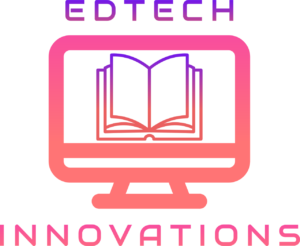Understanding AI Automation
AI automation is a technology that allows machines to perform tasks that traditionally required human intervention. Unlike traditional automation, which relies on predefined rules and repetitive scripts, AI automation can learn, adapt, and make decisions based on data inputs. This makes it more flexible and capable of handling complex tasks that evolve over time. Many beginners mistakenly believe AI is complicated or only for tech experts, but modern tools are designed with user-friendly interfaces that anyone can use. AI automation is transforming industries, from healthcare to marketing, by streamlining workflows and improving efficiency. Even in daily life, it powers virtual assistants, smart home devices, and recommendation systems. Understanding the core concepts of AI automation is the first step to leveraging its benefits without feeling overwhelmed.
Benefits of AI Automation for Beginners
One of the biggest advantages of AI automation is the ability to save time on repetitive and mundane tasks. Beginners can quickly notice the difference in productivity when AI tools handle scheduling, emails, or data entry. AI also reduces human error, which is especially valuable for tasks that require consistency, like generating reports or managing inventories. For small business owners, AI automation can significantly reduce operational costs by automating tasks that would otherwise require additional staff. Beyond efficiency, AI provides insights from data analysis, helping users make smarter, more informed decisions. Even for personal use, automating routine tasks frees up time for learning, creativity, or strategic thinking. Overall, AI automation empowers beginners to work smarter rather than harder while building confidence in using advanced technology.
Key Components of AI Automation
Understanding the core components of AI automation helps beginners know where to start. Machine learning is the backbone, allowing systems to learn patterns from data and improve over time without explicit programming. Natural language processing (NLP) enables machines to understand, interpret, and respond to human language, making chatbots and virtual assistants possible. Robotic Process Automation (RPA) focuses on automating repetitive, rule-based tasks such as invoice processing or data migration. AI-powered tools and software combine these components into easy-to-use applications, making them accessible even to non-technical users. APIs and integration platforms allow beginners to connect multiple tools, creating seamless automated workflows. Knowing the function of each component helps users select the right tool for their specific needs. It also encourages experimentation, which is key to learning AI automation effectively.
Getting Started with AI Automation
Starting with AI automation can seem intimidating, but breaking it into small steps makes it manageable. The first step is choosing beginner-friendly tools like Zapier, Microsoft Power Automate, or AI chatbots that do not require coding knowledge. Setting realistic goals is essential; start with a single task you want to automate, such as email filtering or social media posting. Next, create a step-by-step plan, testing each part of the workflow to ensure it functions correctly. Beginners often make the mistake of trying to automate too many tasks at once, which can lead to frustration and errors. Learning from minor mistakes is part of the process, and over time, confidence grows with experience. Documenting your automation workflows also helps track progress and simplifies troubleshooting when things don’t work as expected.
Practical Examples of AI Automation for Beginners
Practical applications make AI automation tangible for beginners. Automating emails, such as sorting incoming messages or setting automatic replies, is one of the simplest ways to start. Chatbots can handle customer support queries, freeing humans to focus on more complex tasks while providing instant responses. Data entry and report generation are highly repetitive tasks that AI can perform faster and more accurately than a human. Social media management tools can schedule posts, analyze engagement, and even suggest content ideas. Beginners can also explore AI-powered transcription tools, which convert audio or video into text automatically. These examples demonstrate that automation is not reserved for tech experts; anyone can implement it in daily or business tasks. Hands-on practice with these examples builds confidence and helps users understand AI’s potential.
Tips for Learning AI Automation Efficiently
Efficiency in learning AI automation comes from combining theory and practice. Beginners should explore free tutorials and online courses that focus on practical applications rather than heavy programming theory. Paid courses may offer more structured paths and certifications, but starting with free resources prevents unnecessary costs. Building small projects, such as automating a personal calendar or creating a simple chatbot, reinforces learning and provides real-world experience. Engaging in online communities or forums allows beginners to ask questions, share progress, and learn from peers. Consistency is key—practicing automation tasks regularly ensures retention and confidence. It’s also helpful to experiment with multiple tools to find which ones fit your workflow best. Over time, incremental learning creates a strong foundation for tackling more complex automation challenges.
Ethical Considerations and Best Practices
Even at the beginner level, ethical considerations should guide AI automation usage. AI systems can inherit biases from the data they process, which may affect decisions or outputs. Beginners should ensure their datasets are accurate, diverse, and free from harmful biases whenever possible. Data privacy is another critical concern; only use AI tools that comply with security standards and protect sensitive information. Avoid over-reliance on automation, as human oversight is essential to catch errors or address unexpected situations. Documenting AI workflows and maintaining transparency can prevent miscommunication and misuse. It’s also important to respect users’ consent when using automation tools that collect personal information. Following ethical best practices ensures that AI automation delivers benefits without causing harm or unintended consequences.
Frequently Asked Questions (FAQ)
What is the easiest AI automation tool for beginners?
Tools like Zapier, Microsoft Power Automate, and ManyChat are beginner-friendly because they require little to no coding knowledge. These platforms offer templates and drag-and-drop interfaces to create automation workflows easily.
Do I need coding skills to start with AI automation?
No, coding is not necessary for most beginner-friendly AI automation tools. While some advanced tasks may benefit from programming knowledge, basic automation can be implemented without it.
How much time does it take to learn basic AI automation?
Beginners can start seeing results in a few days to weeks, depending on the complexity of the tasks. Regular practice and experimentation accelerate learning.
Can AI automation replace human jobs?
AI can handle repetitive or mundane tasks, but it cannot fully replace human creativity, problem-solving, or emotional intelligence. The goal is to enhance human productivity, not replace it entirely.
How do I measure the success of my automation projects?
Track key metrics such as time saved, error reduction, cost efficiency, and improved workflow consistency. Regular evaluation ensures the automation delivers measurable benefits.









